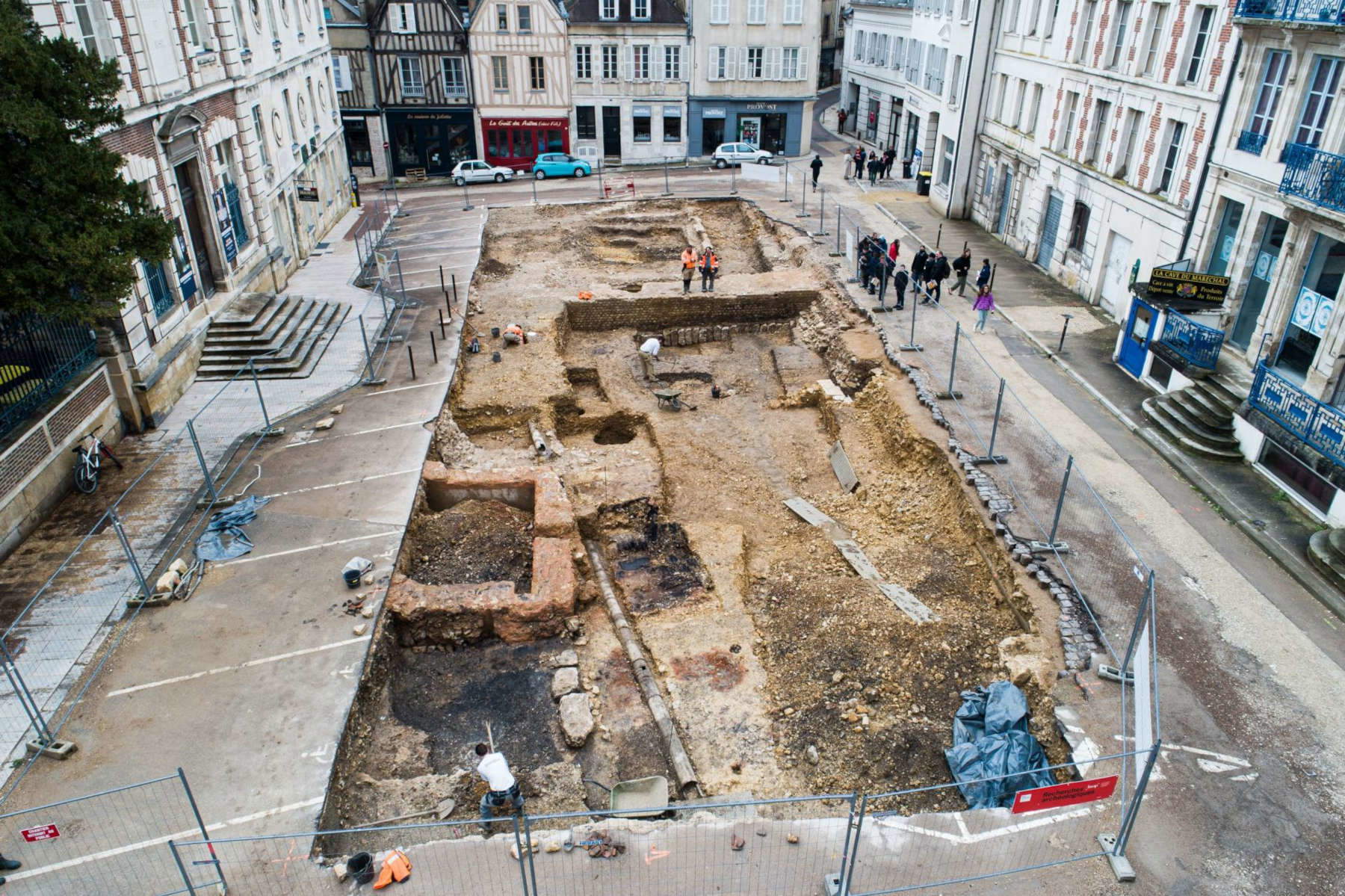A singular necropolis reserved for infants has been discovered in Auxerre, France, following excavations by INRAP (National Institute for Research in Preventive Archaeology) that started in February 2024 in the Place du Maréchal Leclerc, in the city’s historic center. The excavations insist on the remains of the fourth-century castrum (fortified village) which testifies to the re-foundation of the city of Autessiodurum. The fortification itself was built over a previously unknown burial area dating from the imperial age (1st-3rd century ): this is the necropolis that has just been discovered. And it is an unprecedented discovery, because according to French archaeologists it has many features that distinguish it from the funerary areas contemporary to it.
According to ancient rules, necropolises are located outside cities. On the outskirts of these burial areas, it was possible to dedicate spaces to very young children (stillborn or after a few months of life) whose mortality rate was very high at the time. The excavation carried out in Auxerre led precisely to the discovery of a necropolis of infants, and the excellent state of preservation of the are offered archaeologists a unique opportunity to investigate the subject further.
Pottery dishes were broken near the burials, the contents of which were intended for the deceased and the gods. To protect the young deceased, apotropaic objects, intended for protection in the afterlife (e.g., beads, coins, small jewelry) were buried next to them. A miniature ceramic cup was also placed on a child’s head. The Auxerre necropolis, in this sense, testifies to a wide variety of practices in the same funerary space. Most of the children buried were found in the fetal position, although some were buried on their backs. Some bodies were covered with amphora fragments to protect them. In one case, a stone engraved with a rosette was reused to mark the grave. In addition, up to eight stages were observed during the burial of these very young children, testifying to the complexity of the burial rites.
The very high density of burials and their overlap make it possible to study a very large number of burials and other funerary practices associated with very young children during the I-III centuries. Up to five levels of overlapping tombs have been observed, which, in the current state of research, is unique in the Gallo-Roman world, since the custom of respecting the integrity of tombs was in force at that time. In Auxerre, however, some graves destroyed others, which could be related to a problem of available space in the funerary area, but also to the very status of these very young children, who were not always perceived as individuals in their own right. The excavations in Auxerre have brought much new knowledge and thus may shed further light on the funerary practices associated with very young children and stillborn babies in antiquity.







 |
| France, discovery of a necropolis of infants in the center of Auxerre |
Warning: the translation into English of the original Italian article was created using automatic tools. We undertake to review all articles, but we do not guarantee the total absence of inaccuracies in the translation due to the program. You can find the original by clicking on the ITA button. If you find any mistake,please contact us.